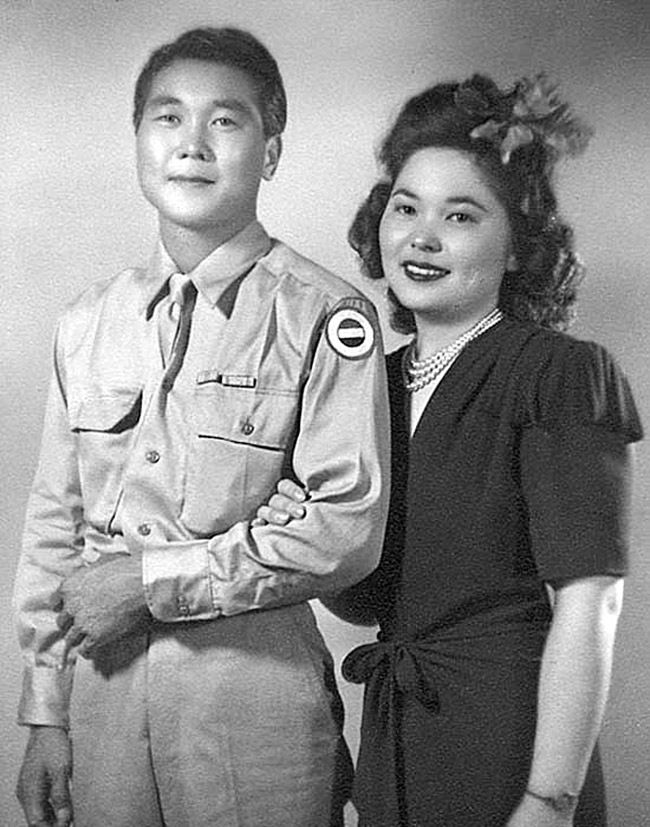A Grand Salute To Ray Nosaka
Pfc. Raymond Nosaka was inurned at Punchbowl National Cemetery last week. There was a small obit when he died at age 98 at Maunalani Nursing and Rehabilitation Center.
I wish there could have been something grander because he was one of the original soldiers of our 100th Infantry Battalion, and longtime president of that unit’s club and gathering place on Kamoku Street.
Nosaka was the iconic AJA inductee into the Army after the Pearl Harbor attack. A boxer and a brawler. Unsure what he wanted to do in life.
Born in Hawaii, raised early in Japan and then at “Nosaka Camp” in Palama — his dad’s gas station caught fire, set off some construction dynamite and blew up the family home. Went to McKinley, where he was a “hooky” student and hung out with gang members.
Nevertheless, he got into UH and graduated.
But jobs for AJAs were scarce. So when an Army draft notice came in 1940, he went willingly — 298th Regiment, Hawaii National Guard.
Nosaka was on the 4-to-8 a.m. guard shift at Schofield Barracks Dec. 7, 1941, when the bombs started falling. His rifle was taken away from him. He was suspect by race.
But then something happened that would mark the rest of his life: formation of the all-Nisei 100th Infantry Battalion with a mandate to go fight the Germans in Italy.
During Mississippi training, Nosaka would be part of a laughable Army experiment. Somebody thought Japanese smelled different because they ate fish and rice and could be sniffed out by dogs. Nosaka and some others were sent to hide and the dogs were loosed. OK, so much for that experiment!
Before being shipped overseas, he’d marry Aki Tamaki in New York City. They were married for 70 years.
In World War II, you served for the duration of the war unless grievously wounded or dead. Nosaka got a bad shrapnel hit that ended his infantry time, and two days before the war ended, he was discharged. Then came 25 years with the Internal Revenue Service, a bachelor’s degree in business administration from UH and a job as a counselor for the Veterans Administration.
His legacy is as president of the 100th Battalion Veterans Club. But what failed him and every club officer was bringing the 100th men together with their 442nd Infantry brethren, even though the two units had been united as a combat outfit since June 1944 in Italy and France. They’d maintain separate post-war clubhouses and a distant relationship.
When one man died recently, the family insisted he have only “100th Battalion” on his headstone, even though he had been a combat soldier of the 100th/442nd Infantry.
I long ago gave up hope of bringing the two old-soldier units to comity.
But Ray Nosaka’s obituary wording in the Star-Advertiser is good:
“An Army veteran who served in World War II with the 442nd Regimental Combat Team, 100th Infantry Battalion.”
BanyanTreeHouse@gmail.com






